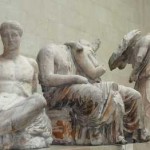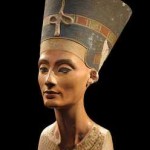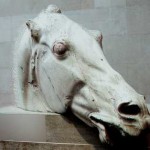Delegates representing 22 countries aren’t mincing words about their efforts to recover illegally looted antiquities.

Zahi Hawass
“We need to cooperate, we need a unification between our countries,” said famed Egyptologist Zahi Hawass at a two-day Cairo conference April 7-8. “Every country is fighting alone, every country suffered alone, especially Egypt. We will battle together.
“Maybe we will not succeed in a lifetime (but) we have to open the subject.”
Hawass, who leads Egypt’s Supreme Council of Antiquities (SCA), urged delegates to draw up lists of artifacts missing from their countries and displayed in museums abroad.

An Elgin Marble
At the top of the list are Greece’s Elgin Marbles, currently housed in the British Museum.
Egypt, meanwhile, has been fighting to recover the Rosetta stone from Britain and a bust of Nefertiti from Germany. Other Egyptian claims include a statue of Hemiunu from the Roemer-Pelizaeus Museum in Hildesheim, Germany. Hemiunu is believed to be the architect of the Great Pyramids of Giza. Also, Egypt wants back a statue of Ramses II from Turin, Italy.
 Peru, meanwhile, has begun legal action to try to reclaim Inca treasures from Yale University, many of them from Machu Piccu.
Peru, meanwhile, has begun legal action to try to reclaim Inca treasures from Yale University, many of them from Machu Piccu.
A major aim of the conference is to call on the United Nations cultural body UNESCO to amend a 1970 convention banning the export or ownership of stolen antiquities acquired after that date.
The convention prohibits the illicit import, export and sale of cultural property, but stipulates there will be no “retroactive” measure for artifacts acquired before the convention was signed.

Queen Nefertiti
Hawass, the so-called “Indiana Jones” of Egypt, has held has helped Egypt reclaim 31,000 relics from abroad. He said he is still eyeng the Rosetta stone, held by the British Museum for more than 200 years, and the 3,400-year-old bust of Queen Nefertiti, on display at the Neues Museum in Berlin.
His latest major victory occurred last March, when U.S. Immigration and Customs officials sent back to Egypt a 3,000-year-old, ornately painted coffin, 125 years after it was smuggled out the country. U.S. officials seized the coffin from a Spanish merchant who had shipped it to Florida for sale, but who had no papers proving ownership. Egypt says it was originally smuggled out of the country in 1884.

An Elgin Marble
“This is always a good moment in my life, actually as an archeologist, to see the return of a piece back to Egypt,” Hawass said. “But this piece especially, it’s a beautiful coffin, it’s one of the best coffins I have ever seen.”
Cooperation between the U.S. and Egypt has helped repatriate many stolen artifacts back to Egypt. In the eight years since Hawass assumed his duties, over 30,000 antiques have been returned to Egypt.
“We have the best cooperation happening between Egypt and the United States in returning stolen artifacts . They returned to us hundreds of pieces until now with FBI, Homeland Security, U.S. customs. Big things are coming back again to Egypt.”
The sarcophagus will be on display in early April in Egypt at a special exhibition called “The Recovered Artifacts.”
In addition to Egypt, representatives from these countries attended the conference: Austria, Chile, China, Cyprus, Ecuador, Greece, Guatemala, Honduras, India, Italy, Libya, Mexico, Nigeria, Peru, Poland, Russia, South Korea, Spain, Sri Lanka, Syria and the U.S.
VIDEO: Zahi Hawass takes you inside the new tombs at Saqqara, the Valley of the Kings, and the temple of Taposiris Magna. Also, see the tombs of Nefret-swt and Qar. Images by Sandro Vannini & Niccolò Piazza.
CITATIONS:
Egypt hosts meeting on recovery of ‘stolen treasures’
BBC, April 7, 2010
Ornate, 3,000-yr-old sarcophagus returns to Egypt
AFP, March 13, 2010, via Google News
New Tang Dynasty Television
March 11, 2010
Unite to recover looted artefacts, Egypt forum told
Africasia, April 7, 2010